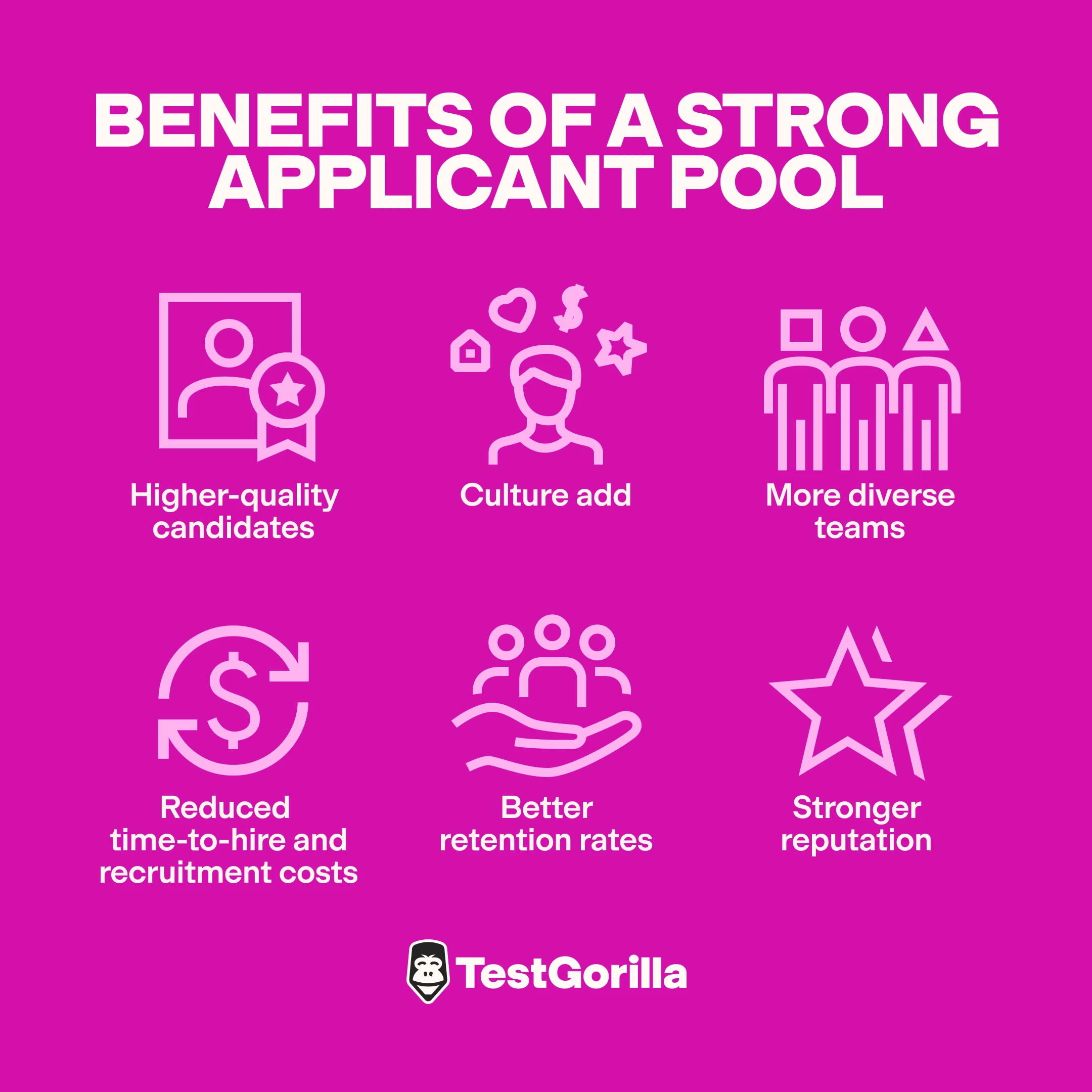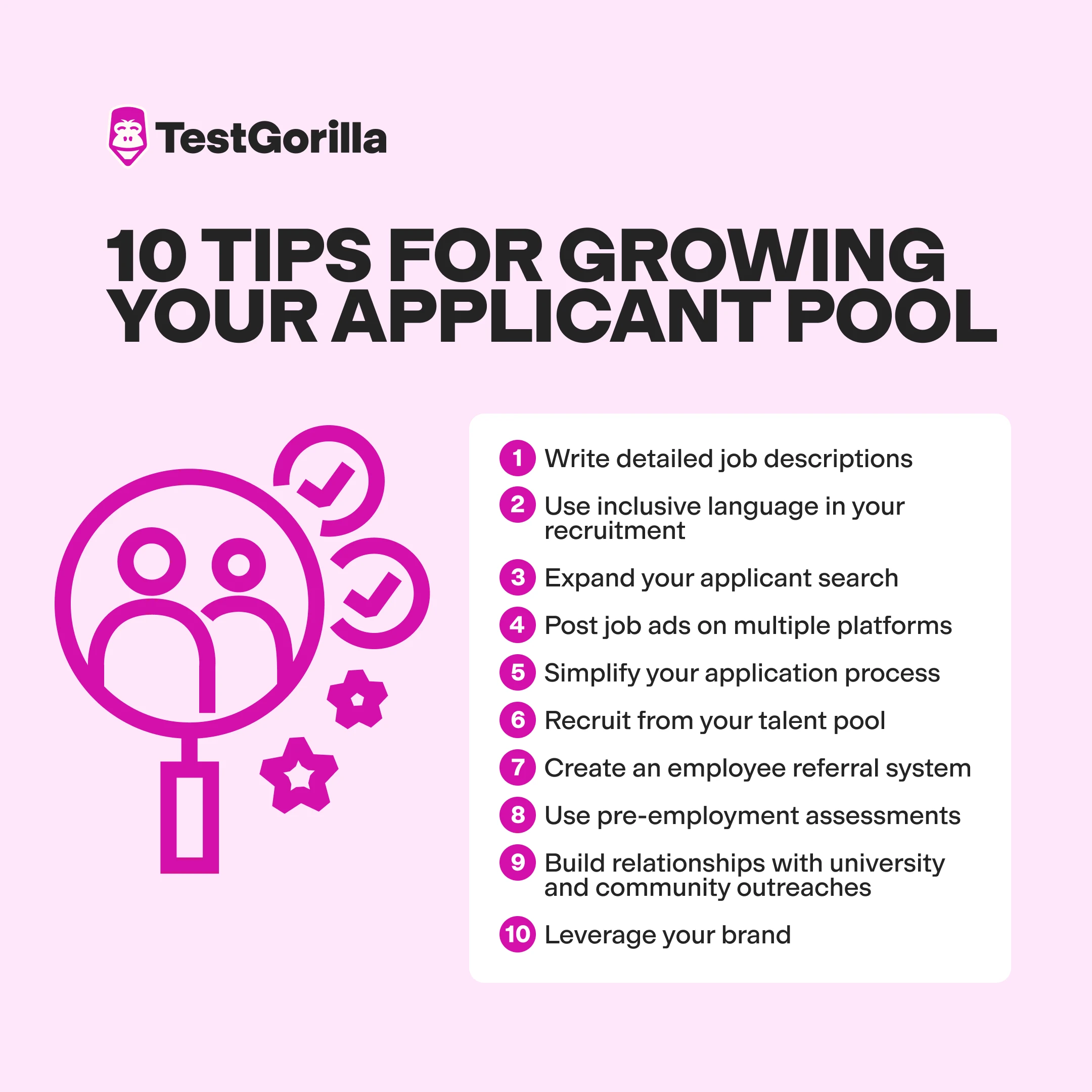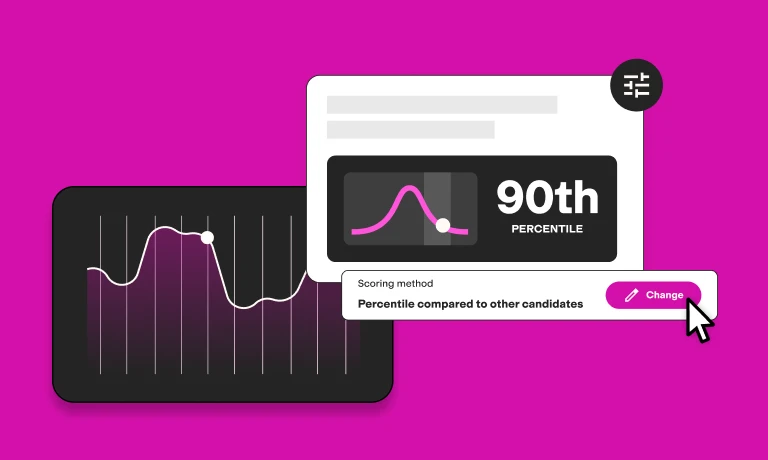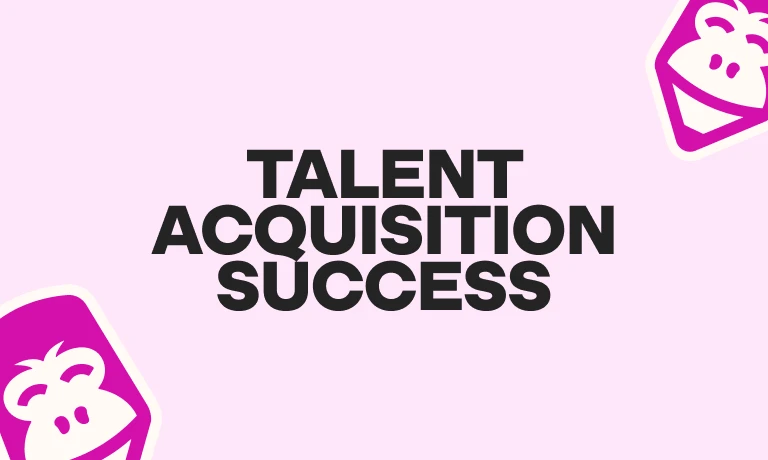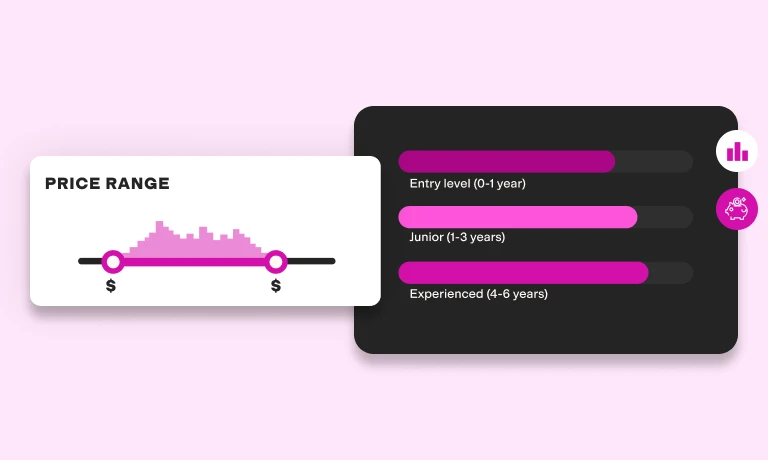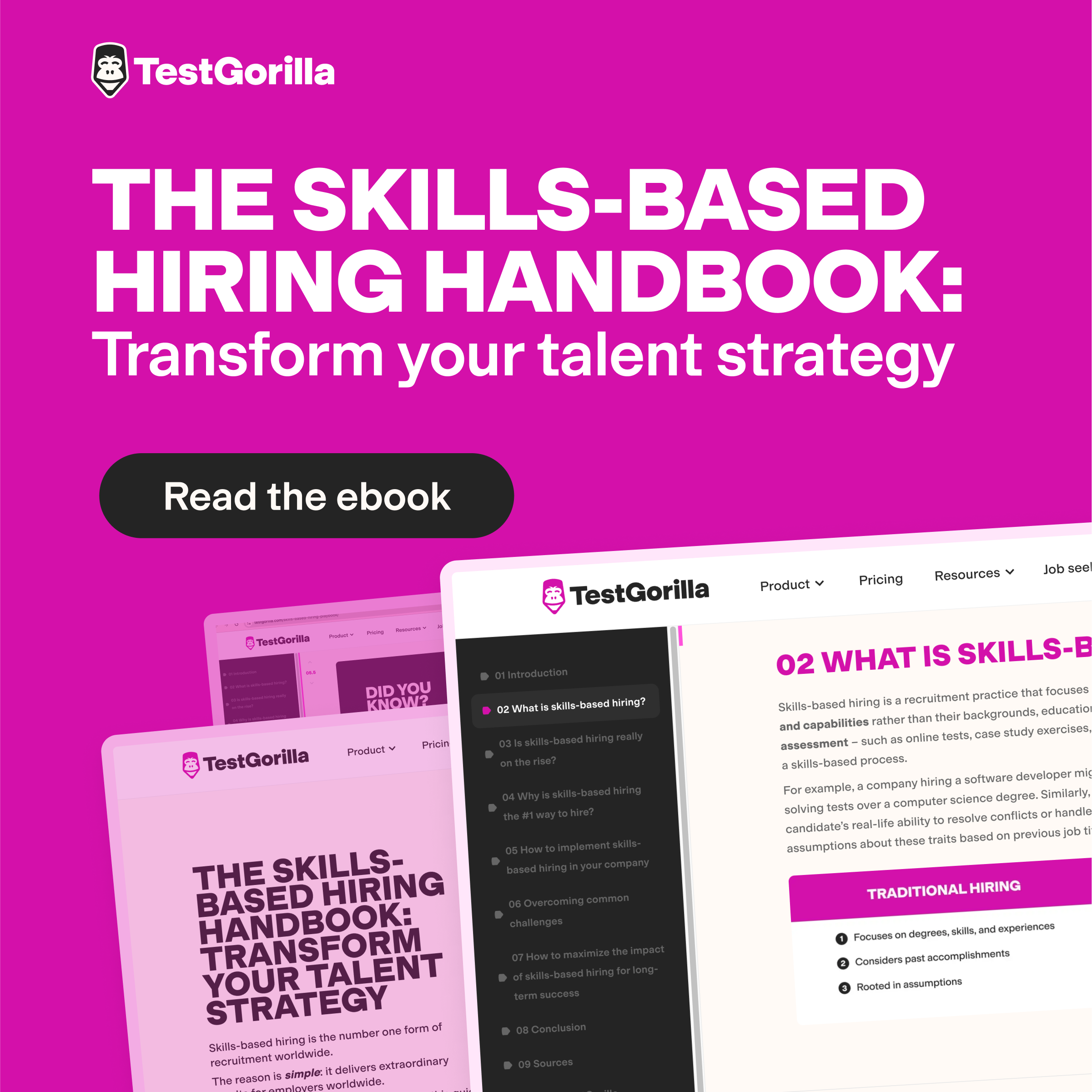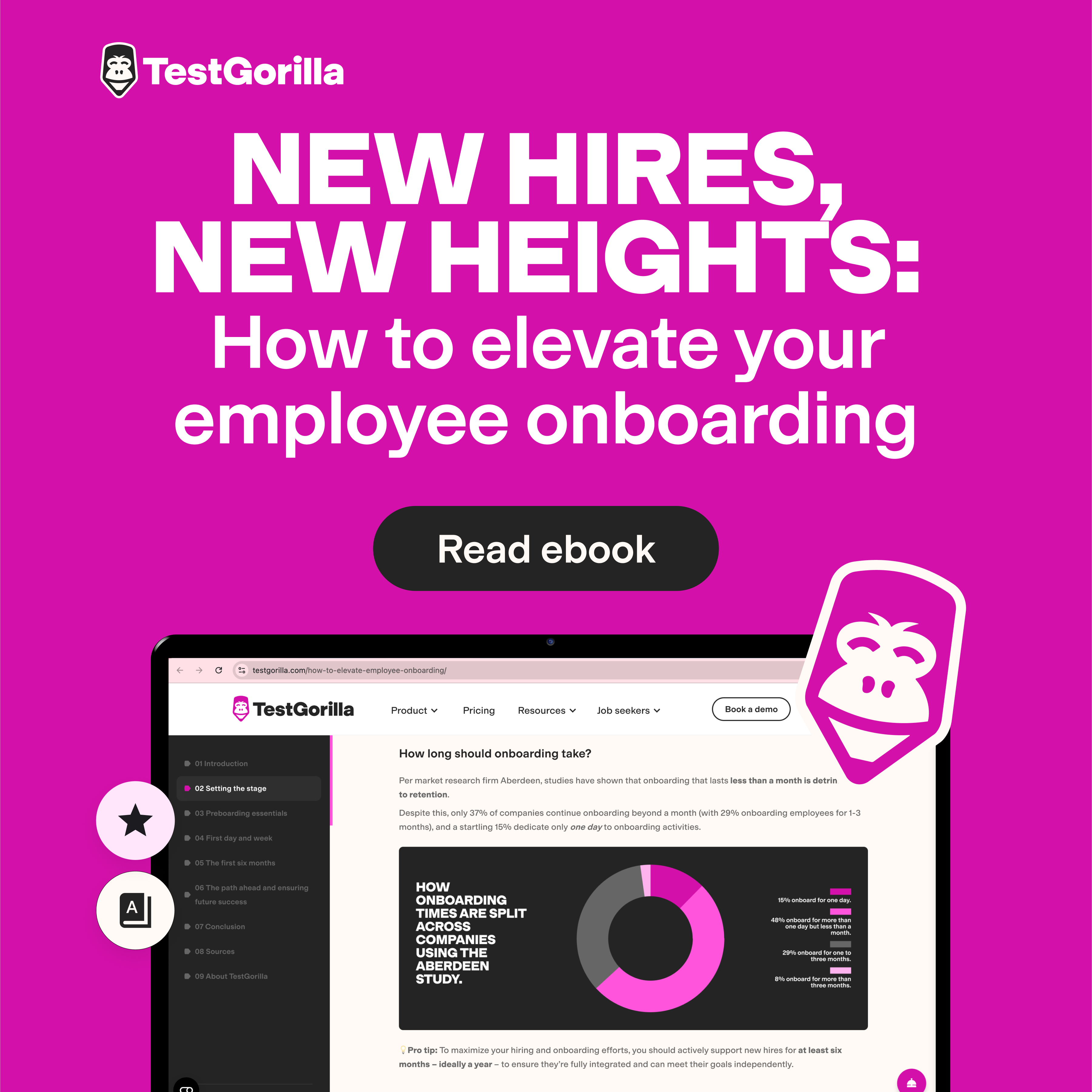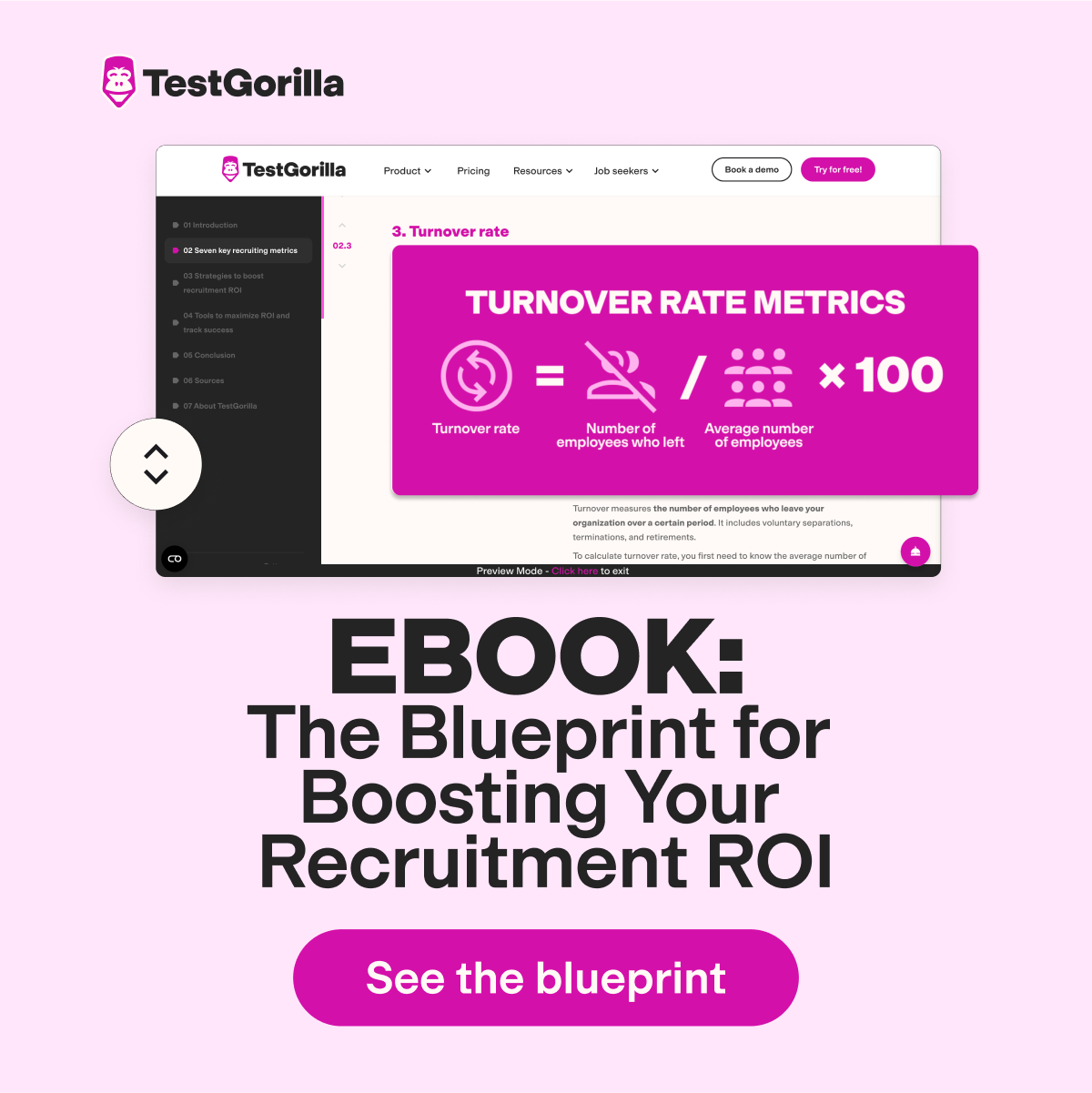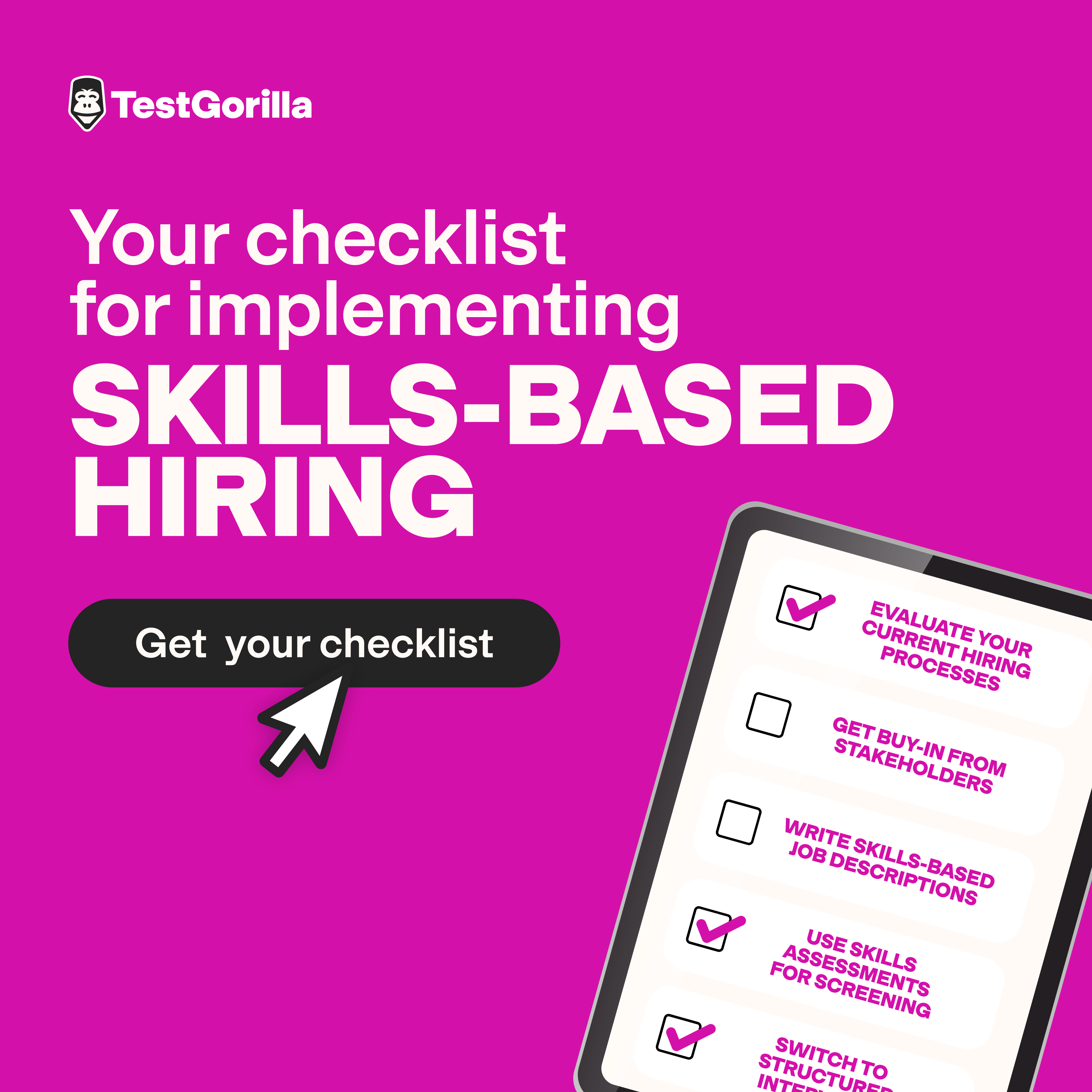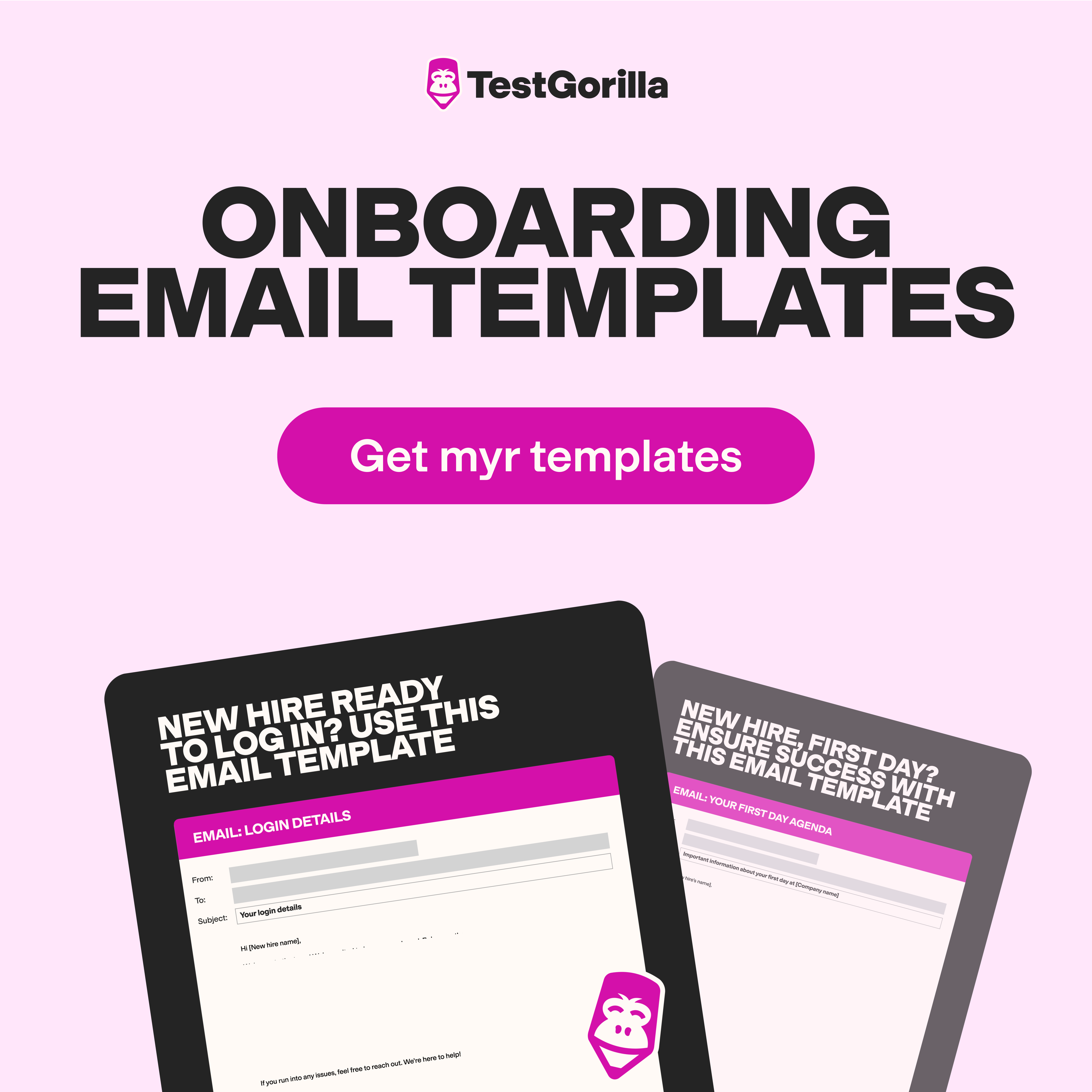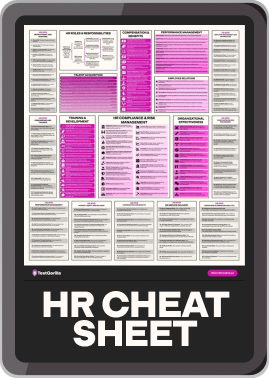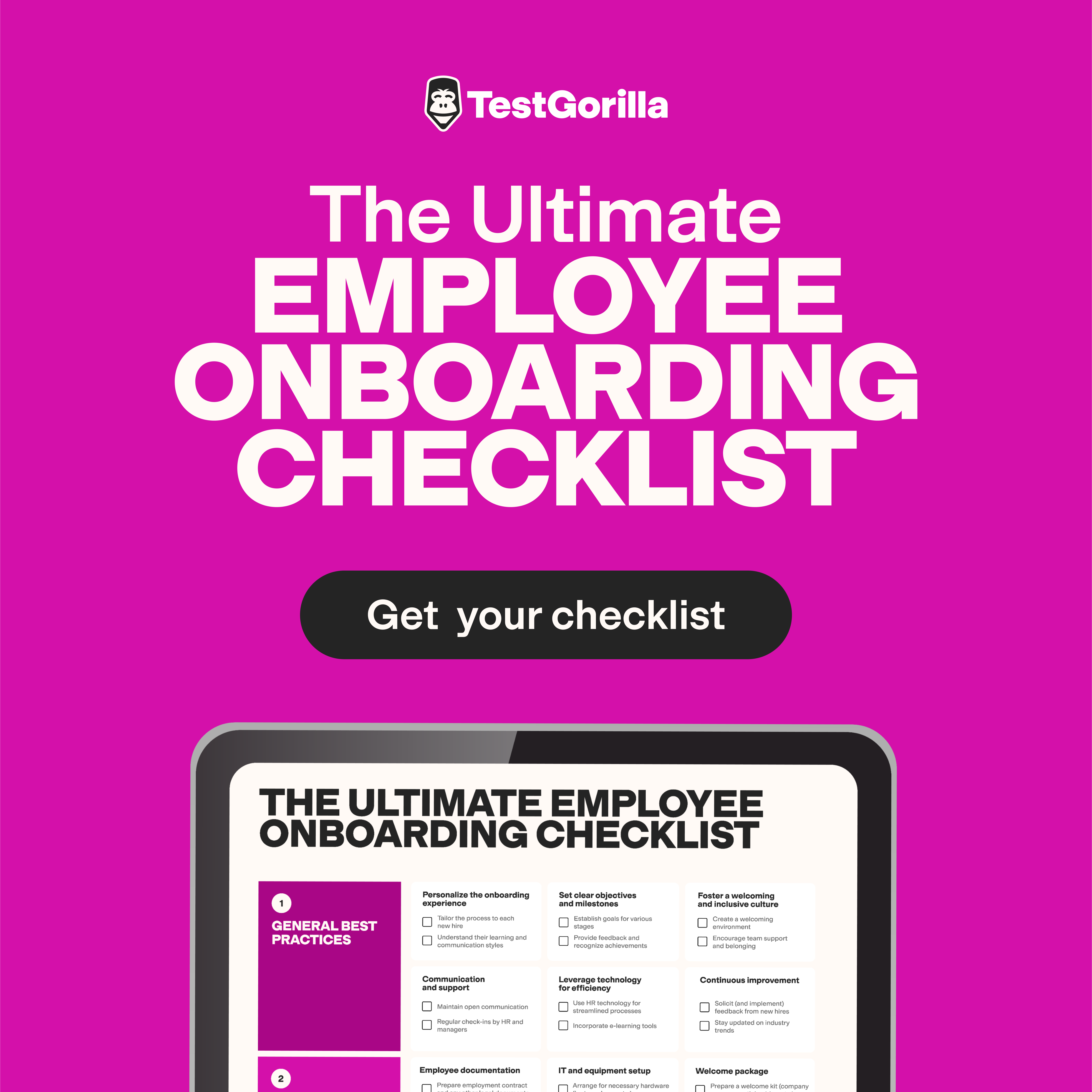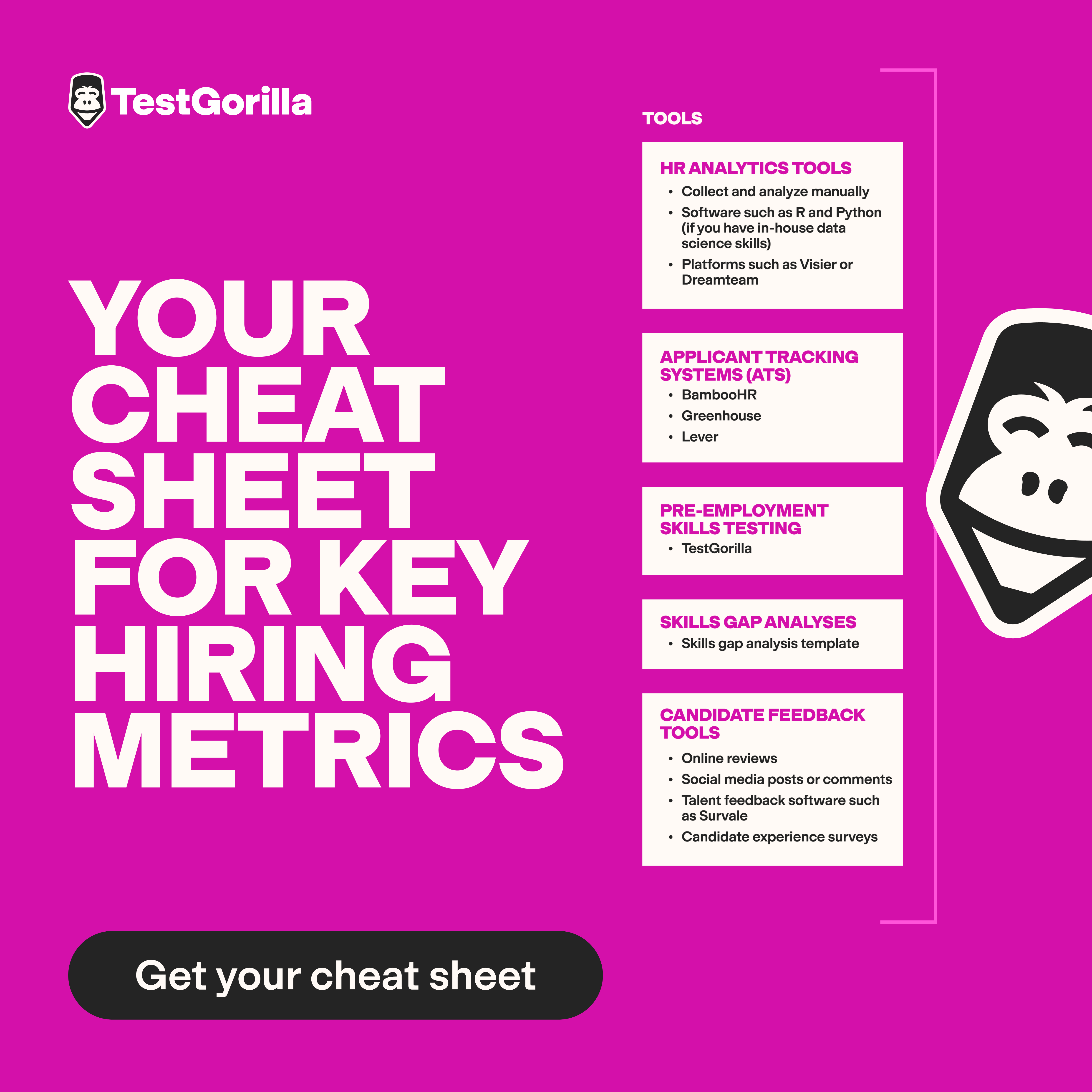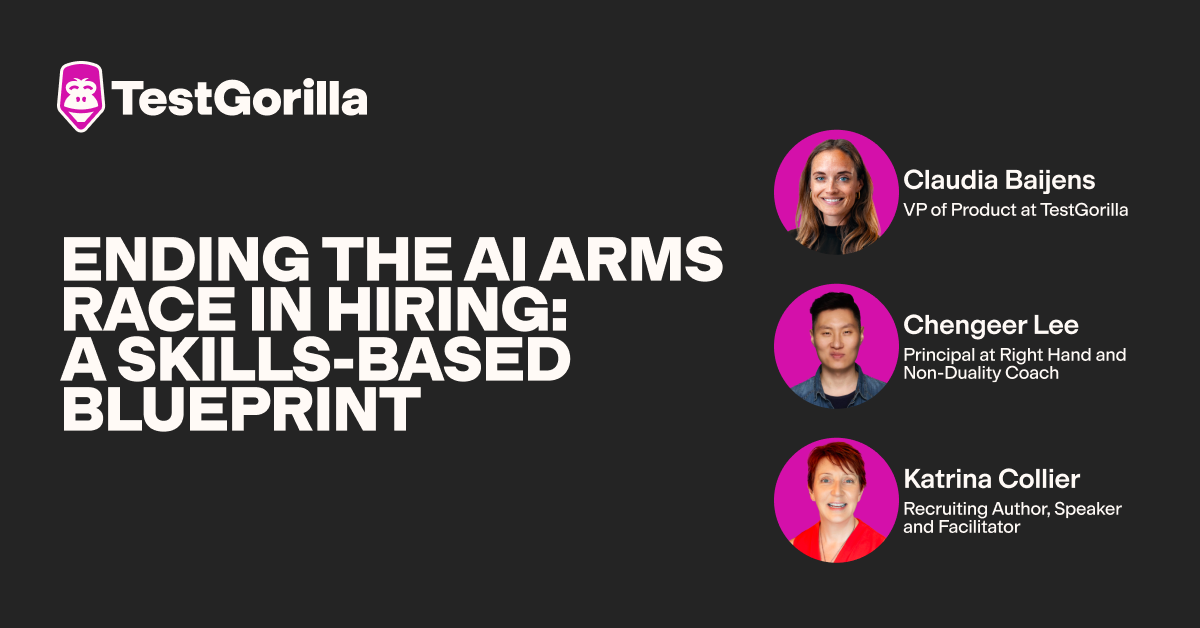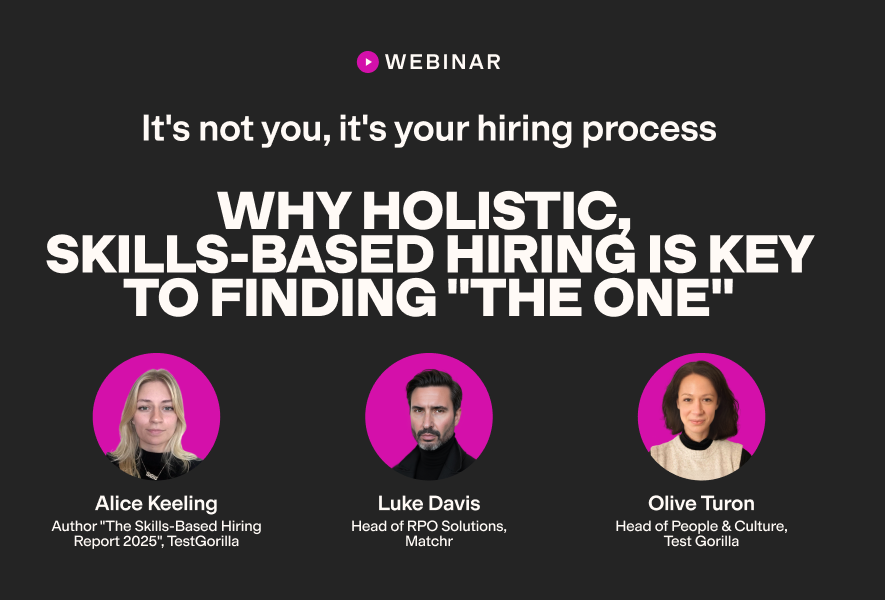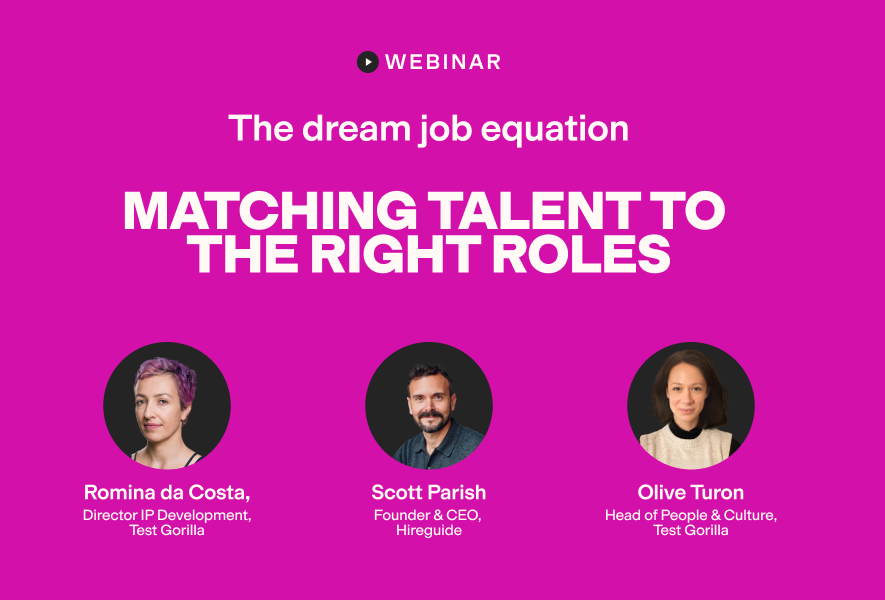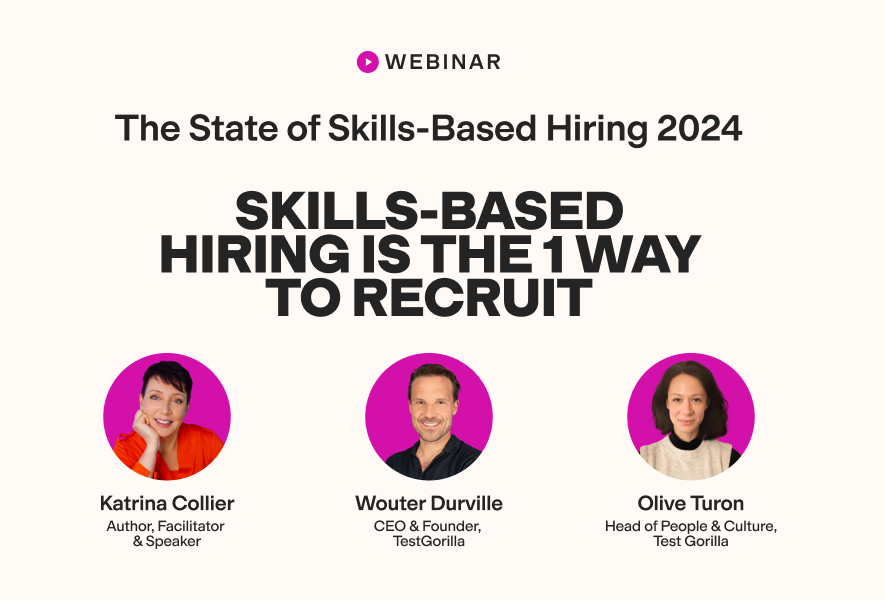Your applicant pool contains everyone who has applied for a specific role at your company. You want this group to be as large and highly skilled as possible to maximize your chances of a top hire. If not, you risk mis-hiring an underqualified candidate who could make costly mistakes. You could even face productivity losses if you can’t fill the role.
But what can you do to expand your applicant pool to ensure you attract and retain top talent for your open positions? Don’t worry, we’re here to help.
In this article, we’ll break down what applicant pools are, the key benefits of having them, and proven strategies to strengthen yours. Whether you’re a recruiter or HR leader, our tips will help you build a high-performing team.
Key takeaways
An applicant pool is the entire group of individuals who apply for an open position. It directly impacts hiring quality, speed, and overall hiring team performance.
Strong applicant pools mean higher-quality candidates, better work cultures, more diverse teams, and reduced time-to-hire and recruitment costs.
Writing detailed, inclusive job descriptions, simplifying the application process, and expanding your applicant search can help you build a robust applicant pool.
Applicant and talent pools are different: Use pre-employment skills assessments to find top-ranking talent in your applicant pool.
What is an applicant pool, and why does it matter?
An applicant pool is the entire group of individuals who apply for an open position.
It’s important not to confuse an applicant pool with a candidate pool or a talent pool. Here’s how the three differ:
The applicant pool contains all individuals who have applied for a specific role. They may or may not be a good fit for the position or the company, and they’ll vary in skill level, experience, and qualifications. While some applicants may have had previous contact with the company, others will be new. We’ll show you how to grow this below.
The candidate pool comprises applicants who have passed the screening stage and are actively being considered for a role. They’re usually invited to interview or take a pre-employment assessment. This is a small subsection of your applicant pool. To grow your candidate pool, check out our guide on talent acquisition.
The talent pool is a wider group of individuals your company might be interested in for future open positions. They possess a wide range of skills and experiences and might apply for specific roles when prompted. A talent pool can include past applicants and candidates, as well as contacts from other sources, such as company events and career interest forms. Explore how to build and expand your talent pool here.
Why does an applicant pool matter? A well-managed applicant pool directly impacts hiring quality, speed, and overall hiring team performance. You can create a robust candidate shortlist from a broader, more diverse group, helping secure the best possible hires a lot quicker.
The best insights on HR and recruitment, delivered to your inbox.
Biweekly updates. No spam. Unsubscribe any time.
Benefits of a strong applicant pool
A strong applicant pool is large and diverse, with a high proportion of individuals well-suited for the role. Below are our six key benefits of having a solid pool of applicants:
1. Higher-quality candidates
With a large and highly skilled pool of applicants, you have more individuals to choose from to create a stronger shortlist of candidates for interviews and pre-employment assessments. This makes it more likely that you’ll find the right fit for your open positions in terms of skills, abilities, and personality traits. Learn how to get high-quality candidates here.
2. Culture add
Finding employees who gel with your business’s mission and values can be tricky. They must possess attributes that connect to your unique company culture, such as motivation, sociability, or innovation.
You’re more likely to find these individuals when you have a large, diverse applicant pool because diversity brings various perspectives, backgrounds, and capabilities to the table. Thus, you’ll increase your chances of finding applicants who are a strong fit for your company.
Better yet, you can draw on candidates who won’t just fit but who will add to your culture. Learn more about culture add vs. culture fit here.
3. More diverse teams
As mentioned, a strong applicant pool helps you include people with varied backgrounds and experiences in your decision-making process – from application to screening to hiring. In turn, with more diverse applicants in your pool, you can make hiring choices that bring more diversity to your team.
4. Reduced time-to-hire and recruitment costs
Filling open positions more quickly means you optimize team productivity and deliver client outcomes on time and on budget. You can reduce time-to-hire by building a larger, more suitable applicant pool. Having this enables you to quickly identify and interview excellent candidates without the need for extra recruitment rounds.
Similarly, an applicant pool that includes suitable individuals from the get-go can save you significant recruitment costs. By finding the right hire quickly, you can minimize job board fees, recruiters’ wages, and other expenses.
5. Better retention rates
A strong applicant pool allows you to select candidates whose skills and career aspirations align closely with both the role and your company’s goals. The more you do this, the stronger your teams will be because when employees feel well-matched to their positions, they’re more likely to stay engaged and committed long-term.
Higher retention reduces the cost and effort associated with frequent rehiring, creating a more stable and cohesive team. The higher the morale, the more productive the team.
6. Stronger reputation
A robust applicant pool signals that your company is an attractive place to work. As word spreads, more job seekers will view your business as one they want to work for, which, in turn, helps draw in more qualified applicants and creates a positive feedback loop for future hiring campaigns.
10 tips to build a robust applicant pool
Here are 10 great ways to grow your applicant pool:
1. Write detailed job descriptions
The more precise the role responsibilities and desired candidate qualities are in your job postings, the more relevant the applications will be. However, keep it concise to avoid overwhelming applicants.
In your job descriptions, outline a typical workday, note the role’s key tasks, and describe the abilities the worker must perform. In addition, detail the support successful candidates will receive and the top targets and challenges they can expect.
You should also summarize your company’s mission and values and any important details about the department and services linked to the role. Ideally, specify a salary range, a list of benefits, and whether the role can be performed in a remote or hybrid setting.
Together, these job description elements help applicants self-select by determining how well they fit your role and company, increasing the quality of your pool.
2. Use inclusive language in your recruitment
The language you use in job descriptions and other media, like recruitment videos, influences people’s decisions to apply. Therefore, it’s essential to evaluate how you describe your company, open positions, and desired employee attributes throughout your recruitment campaigns.
Aim to eliminate any language that can discourage members of certain communities from applying – including ethnic, gender, religious, neurodiverse, or LGBTQ+ groups.
Try the following:
“He or she” can be replaced with “they” to ensure gender neutrality.
“Fast-paced environment” and “performs well under pressure” can be replaced with “enjoys a challenge” so as not to deter those with either neurodivergence or mental health conditions.
Gendered phrases like “ninja” or “rockstar” can be swapped with “skilled professional” to avoid alienating applicants.
“After-work drinks” can be replaced with “optional social activities” to include those who don’t drink alcohol for personal or religious reasons.
“Native language” can be swapped for “first language” to ensure cultural sensitivity.
Include keywords like “remote-friendly” or “diversity-driven” in job titles to attract niche audiences.
Learn more about how and why you should prioritize inclusiveness.
3. Expand your applicant search
Cast a wider search net to bring more types of applicants to your job openings. Consider individual traits like personality type, as well as demographic factors like location, qualifications, highest education level, and family care duties.
Here are some specific tips to expand your applicant search:
Recruit nationally or internationally if the role allows the employee to work remotely, in a hybrid setting, or from the nearest office or branch to their residence. This gives you access to talented applicants who couldn’t otherwise commute or relocate to the role’s main location.
Remove professional qualifications from the job requirements unless they’re essential to performing the role. You’ll get more applications from people with comparable experience and transferable skills – just without formal qualifications.
Consider dropping strict requirements for higher education like PhD, master’s, or bachelor’s degrees unless necessary for the job. You’ll hear from applicants who’ve had alternative ways of learning, like vocational training or entrepreneurship. (Fun fact: Bill Gates never graduated from his bachelor’s program.)
Make the role attractive to applicants with caring responsibilities. For instance, you could offer flexible working hours and monetary contributions towards childcare costs.
Avoid targeting specific personality types through your job ads unless they’re essential for performing the role successfully. For example, describing the ideal employee as “friendly and outgoing” could suggest you’re looking for a very extroverted personality type and detract introverted individuals from applying.
4. Post job ads on multiple platforms
Posting your job openings on multiple online platforms – including various job boards, company websites, and newsletters – helps you reach more applicants.
However, ensure that each platform’s target audience is a good match for the role type and its seniority. For example, posting on a college job board may not be effective for recruiting senior leadership roles.
Furthermore, certain job sites are sector-specific, like not-for-profit or technology, while others cater to applicants with specific backgrounds and abilities. So, consider niche platforms that may connect you to suitable applicants. For instance, a site for entrepreneurial types would be useful for a role requiring independent thinking and innovation.
Get creative with sourcing applicants by applying the following strategies below:
Tap into niche and non-traditional platforms that align with the role’s requirements and your company culture. Think industry-specific forums and communities – like GitHub for tech roles or Behance for creative professionals – to connect with highly skilled candidates who may not be actively job-hunting.
LinkedIn is also a powerful tool for sourcing candidates through its advanced search filters and proactive outreach to passive talent.
Engage with professional associations, trade groups, and local organizations that often have dedicated job boards or newsletters where you can post openings.
Attend or sponsor industry events, hackathons, and meetups to network directly with potential candidates.
Promote your roles through targeted social media campaigns on platforms like Instagram, Facebook, and TikTok. Creative ad formats – like behind-the-scenes company videos and employee testimonials – can resonate with younger, tech-savvy job seekers.
Diversifying your sourcing efforts and thinking creatively means you connect with a broader and more qualified pool of applicants. Learn more about creative sourcing strategies here.
5. Simplify your application process
Lengthy or complicated application forms have a higher drop-out rate, robbing you of potentially qualified individuals. To avoid this, exclude submission elements that aren’t critical to screening applicants and selecting candidates.
For instance, don’t ask applicants to manually fill out details about past roles if this information can be provided in a resume. This task takes time without adding extra value, and some applicants will abandon the submission altogether. Alternatively, use software that automatically extracts employment data from resumes or LinkedIn profiles. Pre-fill technology saves applicants time and reduces friction when applying.
Additionally, mandatory cover letters can deter certain applicants due to the time and effort required to write them. You could miss out on talented individuals who are short on time – like parents and full-time workers – or those who aren’t confident writers. Cover letters also aren’t effective indicators of applicant suitability since they can’t demonstrate job-related skills.
6. Recruit from your talent pool
If you’re not currently recruiting for an open position but are worried about missing out on top talent, use your talent pool to source suitable applicants for your upcoming openings. This approach means you’ll need to nurture and grow your talent pool.
Here are our top tips for growing a talent pool:
Provide a general careers interest form on your website that includes the submitters’ desired role and past experience. This provides you with potential applicants who already understand your company’s mission.
Your talent pool includes your current employees, too. So, use internal communication channels such as emails and internal job boards to advertise open positions within your workforce.
Add unsuccessful former candidates to your talent pool. They grabbed your attention for a reason, so they can help raise the quality of your future applicant pools.
Engage regularly with talent pool contacts through emails and texts and provide targeted job opportunities based on their career interests. You can also share important company updates via digital newsletters or email to maintain your pool’s awareness and interest.
7. Create an employee referral system
Using your existing employees to source new talent can be very advantageous, as they know first-hand what it takes to do the job and fit into the team. You can do this by creating an employee referral system. This encourages staff members to recommend people they know for job openings. Successful referrers usually receive monetary rewards, such as a one-time bonus.
This system may not dramatically increase your number of job applicants since only a small proportion of employees have suitable contacts for specific roles. However, it will raise the quality of your applicant pool through referred applicants who are a strong skill and culture fit.
To leverage this talent acquisition strategy to recruit qualified candidates, learn more about employee referral programs here.
8. Use pre-employment assessments
Many experienced professionals count themselves out of the application process because they’re not confident their experience and skills look strong enough on a resume or cover letter. However, using pre-employment assessments – like the ones TestGorilla offers – at the start of your hiring process can attract more applicants.
This is because assessments allow applicants to showcase their skills, abilities, and personalities in an objective, measurable way. Moreover, they tend to be time-efficient. For example, TestGorilla’s tests last around 10 minutes each, making them accessible to applicants who are pressed for time.
Don’t forget to check out our pre-employment screening guide here.
9. Build relationships with university and community outreaches
Tap into a continuous pipeline of fresh talent by strengthening ties with universities, colleges, and community organizations. Participate in career fairs, offer internships or apprenticeships, and host workshops or seminars to connect with students and graduates.
Community outreach programs – like partnerships with local workforce development agencies and non-profit organizations – can help you access untapped talent pools. Initiatives like these show you’re committed to diversity and community engagement – boosting your brand simultaneously.
You can also consider mentorship programs with universities, supporting relevant student organizations to help build rapport with potential applicants before they enter the workforce.
10. Leverage your brand
Better branding attracts a larger, higher-quality applicant pool than a company that doesn’t prioritize this. In tandem with the above strategies, showcase your company culture, values, and employee success stories on your careers page and social media platforms. Use career sites to actively manage your reputation by responding to reviews and being transparent about your workplace policies.
Furthermore, create engaging content like employee spotlights, day-in-the-life videos, or blogs about your company’s achievements and goals. You’ll simultaneously inform candidates about what it's like to work for your organization while inspiring them to see themselves as part of your team.
When everyone knows how great your company is to work for, you’ll naturally attract more applicants who align with (or add to) your culture.
Find your top applicants with TestGorilla
Struggling to attract job applicants, particularly ones that fit your role descriptions, can mean hiring underskilled individuals and facing high turnover and low productivity. Conversely, a strong applicant pool translates to higher-quality hires, a more engaged workforce, and greater team diversity.
Thankfully, there are some best practices for establishing a robust applicant pool. These include writing detailed job descriptions, using inclusive language, and posting your job ads on multiple platforms. Further, you should build and nurture your talent pool to capture potentially interested applicants.
But beware, traditional recruiting requirements such as resumes and cover letters don’t accurately indicate applicants’ skill levels and can deter prospective talent from applying for jobs. To combat this, use pre-employment skills assessments to make it easy to find top-ranking talent in your applicant pool.
Interested in learning more about pre-employment testing? Explore our library of 350+ science-backed online tests that cover cognitive ability, role-based skills, and personality and culture. Better yet, go right ahead and sign up for a free live demo or get started with a free TestGorilla plan to see our platform in action.
FAQs
How do you create a pool of applicants?
Write simple and straightforward job ads and post them on niche job boards that will attract the right fit for your role and company culture. Simplify the application process to make it quick and easy for prospective talent to apply and, lastly, establish a good company reputation.
How to attract a diverse candidate pool?
Create inclusive job descriptions, get imaginative with sourcing strategies, take a skills-based approach to attract STAR (skilled through alternative routes) individuals, administer talent assessments, and use structured interviews to remove bias.
What is a talent pool?
A talent pool is a database of job candidates who have previously applied to or worked for your company and have the potential to meet its immediate and long-term needs.
You've scrolled this far
Why not try TestGorilla for free, and see what happens when you put skills first.


